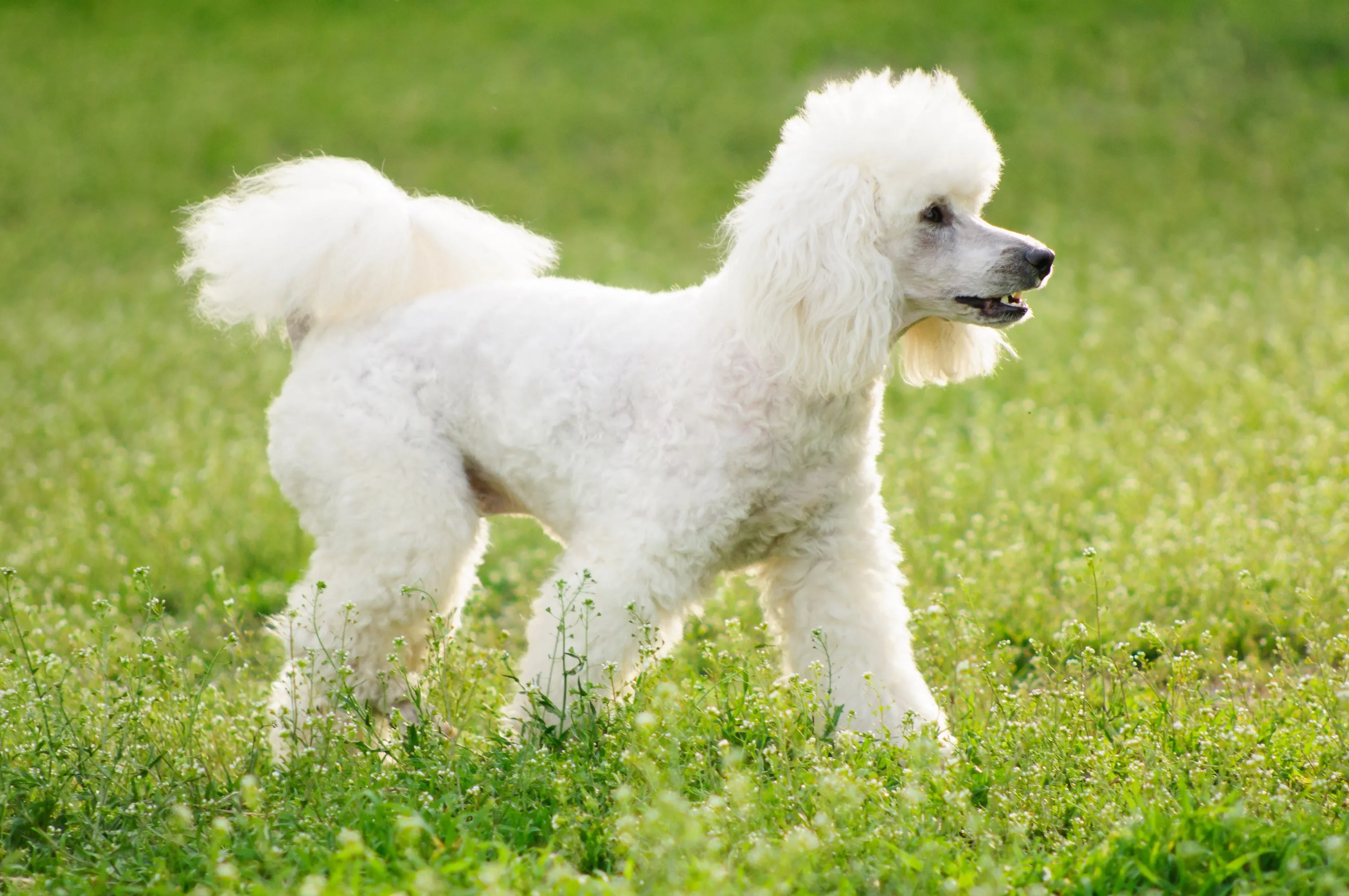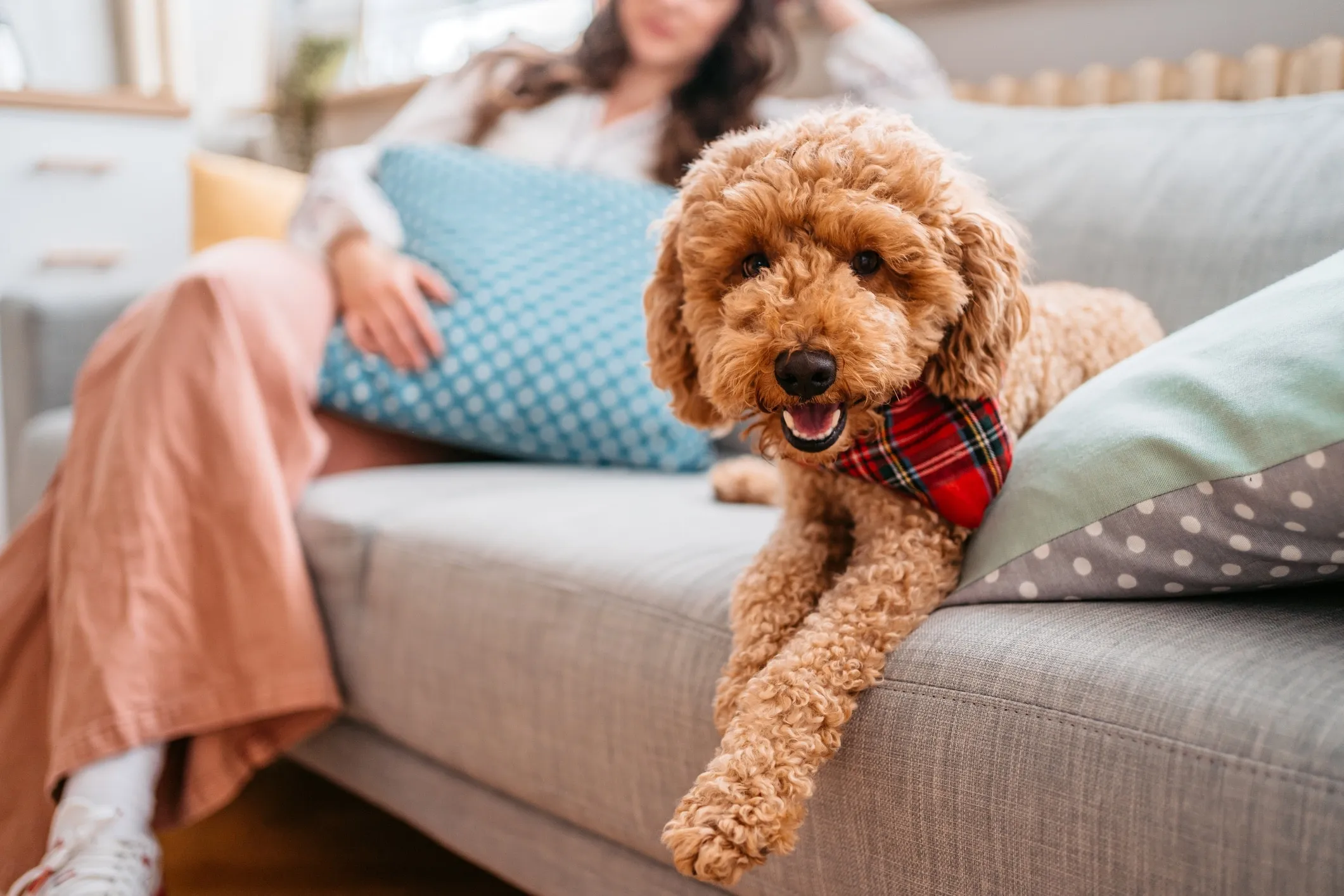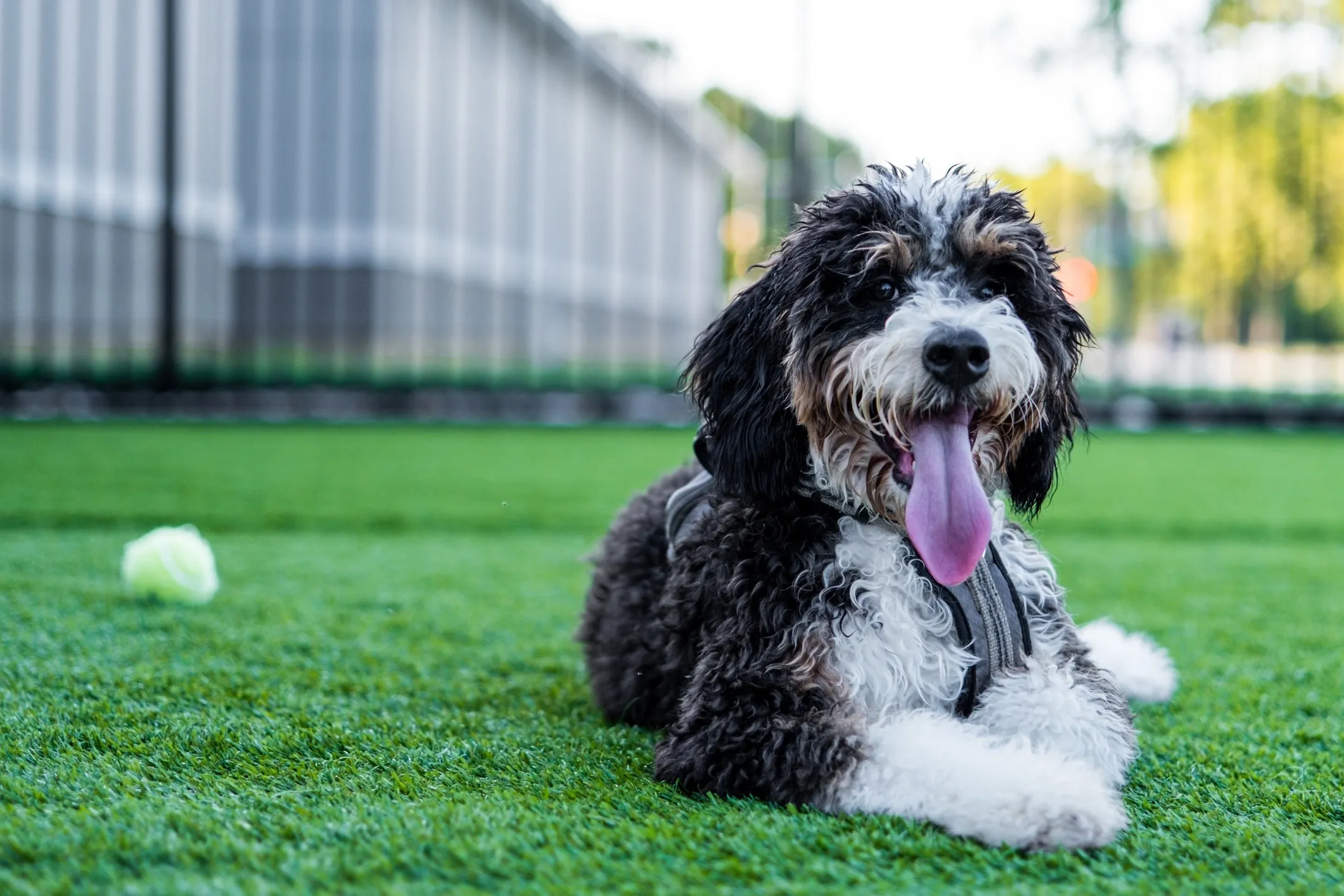For many dog lovers, the idea of a furry friend is appealing, but the reality of constant shedding can be a significant drawback. Whether it’s due to allergies or simply a desire for less cleanup, finding breeds of dogs that don’t shed a lot is a common goal. This guide delves into what makes a dog a low-shedder, clarifies common misconceptions, and introduces you to a variety of excellent choices for a cleaner home and potentially fewer sniffles.
Understanding “Low-Shedding” vs. “Hypoallergenic”
The term “hypoallergenic” is often used to describe dogs that are thought to be better for people with allergies. However, it’s crucial to understand that no dog is 100% allergen-free. All dogs produce allergens, primarily from proteins found in their dander (flakes of dead skin), saliva, and urine. These allergens can trigger reactions in sensitive individuals, manifesting as coughing, itching, or wheezing.
Instead of focusing solely on “hypoallergenic,” it’s more accurate to talk about breeds of dogs that don’t shed a lot. Dogs that shed less release fewer of these allergen-carrying hairs and dander into their environment, which can significantly reduce allergic reactions for many individuals. This also means less dog hair to clean up around the house! While reduced shedding is beneficial, people with severe allergies should still spend time with a specific breed before bringing one home to ensure compatibility. If you’re looking for a companion that keeps dander and hair to a minimum, many wonderful good house dogs that don’t shed are available.
Top Dog Breeds That Don’t Shed Much
While there’s no such thing as a completely non-shedding dog, many breeds have coats that shed minimally, making them excellent choices for those seeking less hair and dander. Here are some of the best breeds of dogs that don’t shed a lot.
1. Poodle
Poodles are perhaps the most famous of the low-shedding breeds. Available in Standard, Miniature, and Toy sizes, they are renowned for their intelligence and distinctive curly coats. This dense, curly hair traps loose fur, preventing it from falling out into your home. Regardless of size, Poodles require regular grooming, including frequent brushing, to prevent their curls from tangling and matting. Their playful and intelligent nature makes them highly trainable and excellent family pets.
 White Poodle walking through lush green grass with a focused expression
White Poodle walking through lush green grass with a focused expression
2. Yorkshire Terrier
These small yet spunky dogs are a popular choice for those seeking a low-shedding companion. Yorkies have a long, silky coat similar to human hair, which sheds minimally. They are adaptable to various living situations, from apartments to larger homes, provided they receive ample attention and mental stimulation. Despite their delicate appearance, they possess a bold and affectionate personality.
3. Shih Tzu
The Shih Tzu is an ancient companion breed known for its flowing double coat and friendly demeanor. While their thick coat looks luxurious, it sheds very little. However, their long hair requires consistent grooming to prevent mats and tangles. Due to their flat faces, Shih Tzus can be prone to certain health issues like overheating and breathing difficulties, and tear stains can be common, requiring regular eye cleaning. This breed makes a charming and affectionate lap dog.
4. Miniature Schnauzer
Miniature Schnauzers are robust, intelligent, and spirited dogs with a wiry, dense double coat that sheds very little. Standing no more than 14 inches tall, they are well-suited for diverse living environments, including city apartments. They require daily exercise, typically an hour, to stay happy and healthy. Their distinctive bearded face and bushy eyebrows add to their charming appearance.
5. Standard Schnauzer
The Standard Schnauzer offers the same desirable low-shedding qualities as the Miniature Schnauzer but in a larger package, weighing up to 45 pounds. These active dogs thrive on regular exercise, enjoying long walks, games of fetch, and mentally stimulating activities. They are intelligent, protective, and make loyal companions for active families.
 Gray Standard Schnauzer standing alert in a sunlit grassy field
Gray Standard Schnauzer standing alert in a sunlit grassy field
6. Giant Schnauzer
As the largest of the Schnauzer breeds, Giant Schnauzers can reach over 27 inches in height and weigh up to 85 pounds. Despite their size, they are considered low-shedding due to their wiry coats. These powerful dogs require significant daily exercise, including long walks, runs, or hikes, to channel their energy. They are intelligent and protective, making them excellent working dogs and devoted family members for experienced owners.
7. Bichon Frise
The Bichon Frise is a cheerful, playful, and affectionate small dog with a soft, curly double coat that resembles a powder puff. This coat sheds minimally but requires regular grooming to prevent matting. Bichons are highly intelligent and eager to please, making them relatively easy to train with positive reinforcement. They thrive on companionship and are known for their engaging personalities. For those searching for cute dogs that don’t shed much, the Bichon Frise is often a top contender.
8. Chinese Crested
Known for their unique appearance, Chinese Cresteds come in two varieties: hairless and “powderpuff.” Both are considered low-shedding. The hairless variety has smooth skin with tufts of hair on their head, tail, and paws, while the powderpuff has a full, silky coat. They are affectionate, playful, and make wonderful companions, adapting well to various households. Their minimal shedding makes them a great option for people with mild allergies.
9. Portuguese Water Dog
Originally bred to assist fishermen, Portuguese Water Dogs are intelligent, highly trainable, and friendly. Their thick, curly, single coat is nearly waterproof and sheds minimally, making them a popular choice for those with allergies. These medium-sized dogs are high-energy and require substantial daily exercise, including swimming, which they adore. Their eagerness to learn and active nature make them great partners for outdoor adventures.
10. Labradoodle
A cross between a Labrador Retriever and a Poodle, the Labradoodle was originally bred to be a hypoallergenic service dog. They inherit the Poodle’s low-shedding coat (though coat type can vary) and combine it with the friendly, outgoing nature of the Labrador. Labradoodles are intelligent, highly trainable, and gentle, making them excellent family pets, especially when well-socialized from a young age.
11. Goldendoodle
Another popular “doodle” breed, Goldendoodles are a mix of a Golden Retriever and a Poodle. Like Labradoodles, they typically have low-shedding coats, inheriting this trait from their Poodle parent. They are known for their friendly disposition and high intelligence. Their coats come in various colors and textures and require frequent grooming to prevent matting, often with a slicker brush. These dogs are affectionate and generally good with children and other pets.
 Goldendoodle resting comfortably on a couch with a person in the background
Goldendoodle resting comfortably on a couch with a person in the background
12. Lagotto Romagnolo
Originating from Italy, Lagotto Romagnolo dogs were historically water retrievers, with their curly, woolly coats protecting them from cold waters. These less common breeds of dogs that don’t shed a lot are known for being good with children and other pets, making them suitable family dogs. Their unique coat requires specific grooming to prevent felting.
13. Affenpinscher
Affenpinschers are small, charming dogs known for their monkey-like expressions. Their dense, wiry coat produces very few allergens. While low-shedding, their coat requires diligent care, including regular at-home brushing and professional stripping to maintain its texture and prevent tangles. They are playful, curious, and make loyal companions.
14. Irish Water Spaniel
Friendly, intelligent, and highly trainable, Irish Water Spaniels are distinctive water dogs with a dense, curly, liver-colored coat that sheds minimally. They have a high energy level and require plenty of exercise to stay happy and healthy. Regular grooming is essential for their unique coat to prevent matting and keep it in good condition.
15. Aussiedoodle
A cross between an Australian Shepherd and a Poodle, the Aussiedoodle is a highly intelligent and energetic low-shedding dog. Both parent breeds contribute to their high drive, so Aussiedoodles need significant exercise and mental stimulation to prevent boredom and destructive behaviors. Enrichment toys and consistent training are key to keeping these smart dogs content.
16. Bolognese
Hailing from Italy, Bolognese dogs are cute, fluffy white pups with a long, cotton-like coat that sheds very little. Despite their characteristic “messy” appearance, their coat requires extensive grooming to prevent mats. These playful and easygoing dogs are known for getting along well with children and other pets, fitting into various living situations.
17. Maltese
The Maltese is a small dog renowned for its luxurious, long white coat, which sheds very little. They are affectionate and playful companions but demand dedication to their grooming needs, especially if their hair is kept long. Many owners opt for a shorter “puppy cut” to make grooming more manageable, often using grooming clippers for convenience. If you are interested in dogs that don’t shed and stay small, the Maltese is an excellent example.
 Woman gently holding a small white Maltese dog on a comfortable bed
Woman gently holding a small white Maltese dog on a comfortable bed
18. Soft Coated Wheaten Terrier
As their name suggests, Soft Coated Wheaten Terriers have a silky, soft coat that sheds minimally. These medium-sized Irish terriers maintain a high energy level throughout their lives, necessitating ample exercise and mental stimulation to ensure good behavior. They are joyful, friendly, and deeply devoted to their families.
19. Coton de Tulear
Originating from Madagascar, the Coton de Tulear is a small, easygoing dog with a soft, cotton-like coat that sheds minimally. Their good-natured temperament makes them well-suited for families with children and other pets, particularly when introduced properly. Cotons thrive on companionship and are known for their charming personalities.
20. Schnoodle
The Schnoodle is a designer breed resulting from a cross between a Schnauzer and a Poodle – two low-shedding breeds. This combination typically results in a dog with a curly or wavy coat that sheds very little, making them a great choice for allergy sufferers. Schnoodles are known for their intelligence, playful nature, and adaptability.
21. Bedlington Terrier
Often likened to a lamb in appearance, the Bedlington Terrier is a small, curly-haired breed with a distinctive topknot and ear tufts. Their unique woolly coat sheds very little. Bedlingtons form strong bonds with their human companions and can be prone to separation anxiety if left alone for extended periods. Monitoring tools like dog cameras can help manage this condition.
22. Xoloitzcuintli (Mexican Hairless Dog)
One of the oldest and rarest breeds, the Xoloitzcuintli (pronounced show-low-eats-queen-tlee) comes in three sizes and two coat varieties: hairless and coated (with a very short, fine coat). Both types are considered low-shedding. Xolos are known for being calm, intelligent, and loyal companions, though they can be aloof with strangers.
23. Whoodle
The Whoodle is a delightful cross between a Soft Coated Wheaten Terrier and a Poodle. This hybrid combines the intelligence and affectionate nature of both parent breeds with a low-shedding coat. Whoodles are friendly, playful, and make excellent family pets, requiring regular exercise and grooming for their soft, wavy fur.
24. Bernedoodle
A cross between a Bernese Mountain Dog and a Poodle, Bernedoodles are large, affectionate dogs with gentle temperaments, making them popular family pets. They typically inherit the Poodle’s low-shedding coat, which can vary in texture. These active dogs need plenty of exercise to stay happy and thrive on interaction with their families. Many find big fluffy dog breeds that don’t shed like the Bernedoodle to be ideal companions.
 Large Bernedoodle dog lying comfortably in green grass with its tongue slightly out
Large Bernedoodle dog lying comfortably in green grass with its tongue slightly out
25. Shorkie
The Shorkie is a mixed breed combining two low-shedding dogs: the Shih Tzu and the Yorkshire Terrier. These small dogs embody the best traits of both breeds—playful, friendly, and small in stature. Like most dogs on this list, Shorkies require consistent grooming to maintain their coats and prevent matting. For those seeking smallest dog breeds that don’t shed, the Shorkie presents a charming option.
26. Afghan Hound
Known for their elegant appearance, Afghan Hounds possess a long, flowing coat that, despite its length, sheds minimally compared to many other breeds. These aristocratic sighthounds are built for speed and require consistent exercise. While loving towards their families, they can be reserved with strangers, emphasizing the importance of early and consistent socialization.
27. Barbet
The Barbet, pronounced “bar-bay,” is a cheerful and shaggy water dog from France, named for the French word for “beard.” Their woolly, curly coat is protective and sheds very little. Barbets love to swim and need regular brushing (two to three times a week with a slicker or pin brush) to keep their coat in good condition, especially after water activities.
28. Shih-Poo
A Shih-Poo is a mixed breed resulting from a cross between a Shih Tzu and a Poodle (often a Toy Poodle). This small, low-shedding pup adapts well to almost any living situation, provided they receive about 30 minutes of daily exercise and regular brushing. They are known for their playful and affectionate personalities.
29. Peruvian Inca Orchid
Peruvian Inca Orchids are ancient and rare dogs, primarily known for their hairless bodies, which makes them naturally low-shedding. They come in three sizes (small, medium, and large) and are the national dog of Peru. These elegant dogs are typically quiet, protective, and form strong bonds with their families.
30. Malshi
The Malshi is a happy, small, low-shedding dog, a cross between a Maltese and a Shih Tzu. They thrive on close companionship and are most content when surrounded by their favorite humans. Malshis are known for their playful and affectionate nature, making them wonderful lap dogs that fit well into various households, given their minimal shedding.
Living Happily with a Low-Shedding Dog
Choosing a low-shedding dog is a great first step, but responsible pet ownership, especially for individuals sensitive to allergens, involves ongoing care.
Keep Up With Grooming
Even breeds of dogs that don’t shed a lot require specific grooming to manage their coats and minimize allergens. Regular grooming and bathing are essential. Many low-shedding breeds, particularly those with curly or long coats, need professional grooming appointments for trimming or hand-stripping. If you choose to groom at home, be prepared for consistent brushing—daily for some breeds—and bathing every four to six weeks. Using specialized shampoos designed to reduce pet dander can also be beneficial.
Maintain a Clean House
Minimizing allergens in your home goes beyond just the dog’s coat. Regular cleaning is vital. Vacuuming carpets, dusting surfaces, and washing bedding frequently will help reduce the accumulation of pet dander. Utilizing air purifiers with HEPA filters and ensuring good ventilation throughout your home can also significantly decrease airborne allergens. Creating designated “allergy-free” zones in your home, such as bedrooms, can also provide a safe haven for sensitive individuals.
Talk to Your Doctor and Veterinarian
If you have allergies, consulting your healthcare provider is crucial for effective allergy management. They can recommend appropriate treatments, including medications, nasal sprays, or allergy shots, to help manage your symptoms while living with a dog. Additionally, it’s wise to discuss your specific situation with your veterinarian. They can offer advice on diet, grooming products, and general care tailored to your dog’s breed and your household’s needs, helping to further reduce allergens and ensure a healthy environment for both you and your furry companion.
Bringing home a dog that doesn’t shed much can open up the wonderful world of pet companionship for many individuals who might otherwise struggle with allergies or simply prefer a cleaner home. With careful consideration of breed characteristics and diligent care, you can enjoy all the joy a dog brings with minimal shedding concerns.
